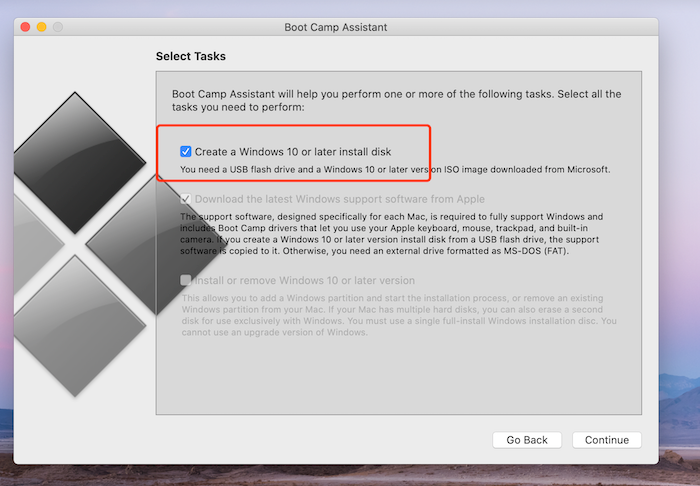

- MAKE A BOOTABLE FLASH DRIVE FOR WINDOWS ON MAC MAC OS X
- MAKE A BOOTABLE FLASH DRIVE FOR WINDOWS ON MAC INSTALL
- MAKE A BOOTABLE FLASH DRIVE FOR WINDOWS ON MAC UPDATE
- MAKE A BOOTABLE FLASH DRIVE FOR WINDOWS ON MAC UPGRADE
Bootability is a convenience that allows you to continue working if your startup disk fails, but it is not required for restoring data from a CCC backup. Does my CCC backup have to be bootable for me to restore data from it? Apple has assured us that they are working towards fixing the problems in ASR that prevent it from cloning the Big Sur System volume.
MAKE A BOOTABLE FLASH DRIVE FOR WINDOWS ON MAC INSTALL
Right now you can install Big Sur onto your CCC backup to make it bootable, and in the future we'll use Apple's APFS replication utility (ASR) to clone the Big Sur System volume. The changes in Big Sur definitely present some new logistical challenges, but yes, you can have a bootable backup of macOS Big Sur. But no, we're not just getting a massive new OS this year, we're getting a new hardware platform too! We're seeing a lot of change at a time where we could really use some stability. On top of that we're in the midst of a pandemic, and one would hope that Apple would cool their jets and defer these massive changes for a year. I think that pessimistic conclusions are also fostered by a concern that Apple is trying to turn macOS into iOS, or otherwise merge the two platforms. Based on that statement alone, and a suggestion from one of my competitors to just give up and use Time Machine instead (which does not make bootable backups, nor back up the System), someone could falsely conclude that it's impossible to have a bootable backup. Thanks to these massive system changes and some bugs in the version of Big Sur that Apple intends to ship, nobody can make a proper copy of the System volume right now, not even with Apple's proprietary utilities. I can certainly understand why people are concerned about the future of this solution. Does this mean that we can no longer have bootable backups? To create a functional copy of the macOS 11 System volume, we have to use an Apple tool to copy the system, or install macOS onto the backup.

This volume is cryptographically sealed, and that seal can only be applied by Apple ordinary copies of the System volume are non-bootable without Apple's seal. The system now resides on a "Signed System Volume".
MAKE A BOOTABLE FLASH DRIVE FOR WINDOWS ON MAC MAC OS X
As the numeric change would suggest, though, this is the biggest change to macOS since Apple introduced Mac OS X roughly 20 years ago.
MAKE A BOOTABLE FLASH DRIVE FOR WINDOWS ON MAC UPGRADE
As with every upgrade since the original release of Mac OS X, we have to make changes to CCC to accommodate the changes in this new OS. With the announcement of macOS Big Sur, Apple has retired Mac OS X (10) and replaced it with macOS 11.

Please keep in mind, however, that your CCC backup does not have to be bootable for you to be able to restore data from it. If you would like to make your Apple Silicon Mac backup bootable, you can install Big Sur onto the CCC Data Volume backup.
MAKE A BOOTABLE FLASH DRIVE FOR WINDOWS ON MAC UPDATE
When Apple fixes that, we'll post an update to CCC that restores support for making bootable backups on Apple Silicon Macs.ĬCC is a native application on Apple Silicon and is 100% compatible with Apple Silicon MacsĬCC will automatically proceed with a Data Volume backup when backing up an APFS Volume Group on Apple Silicon Macs - that's a complete backup of your data, applications, and system settings. Support for System volume cloning on Apple Silicon Macs is disabled for now because Apple's APFS replication utility does not currently work on that platform. Update Nov 24: CCC 5.1.23 can now make bootable backups of a Big Sur startup disk on Intel-based Macs. CCC 5.1.23+ can make bootable backups of Big Sur on Intel-based Macs.


 0 kommentar(er)
0 kommentar(er)
